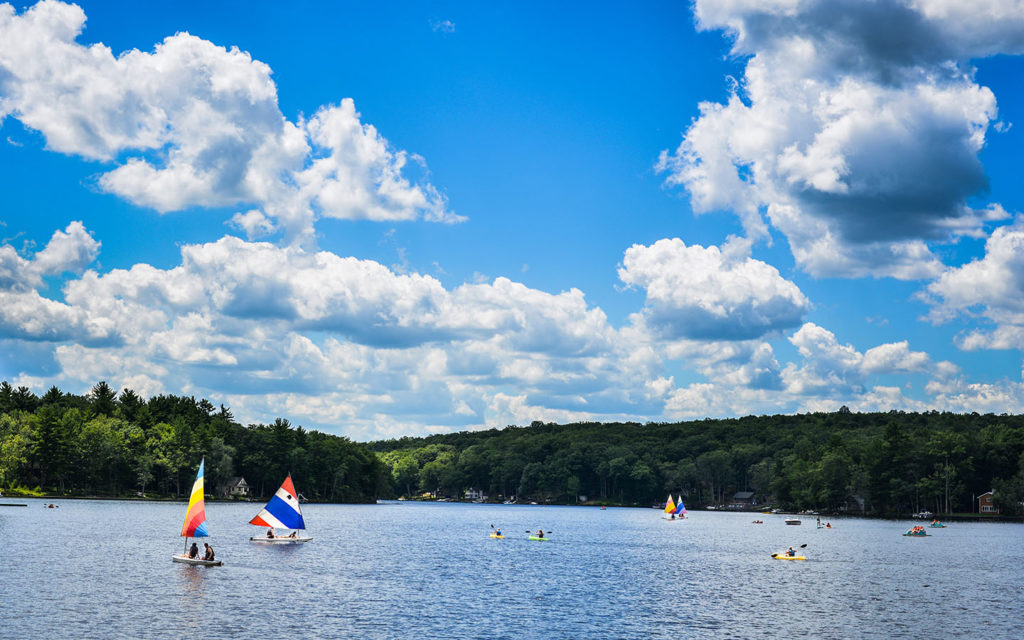History of Woodloch
The history of Woodloch Pines, an inclusive family resort in the Pocono Mountains
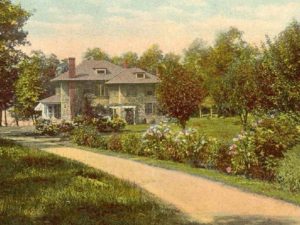
Growing up, Mary Mould and her family vacationed off the serene shores of Lake Teedyuskung, located in the Lake Region of Pennsylvania’s Pocono Mountains. Mary loved the area so much that she vowed to return often.
In 1944, Mary and her high school sweetheart, Harry Kiesendahl were married. Harry was an energetic and enthusiastic football player of Baldwin High School on Long Island, NY. After Harry’s tour of duty in W.W. II, the two settled down to start a family. Mary often thought about her time spent on the gorgeous Lake Teedyuskung, but her thoughts were quickly consumed by the task of raising her three children, John, Nancy, and Steven.
However, nothing short of fate intervened. Harry saw in the New York Times a small resort for sale on a private lake in Northeastern Pennsylvania. The small, unidentified lake in the listing turned out to be Lake Teedyuskung.
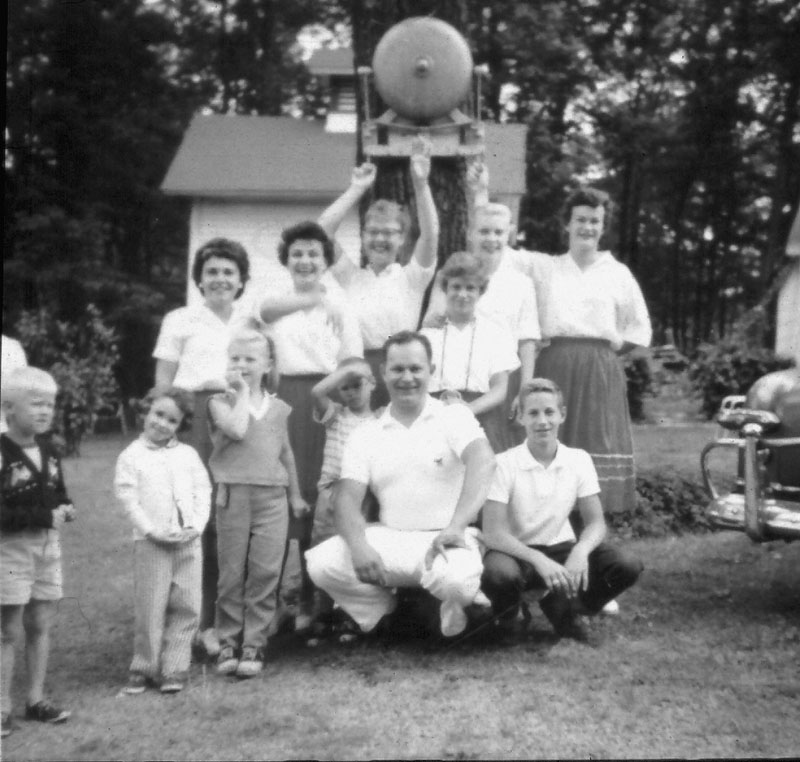 Harry and Mary jumped on the opportunity to purchase the property from the current owners, the Svenningsens, and events steamrolled from there. In April 1958, Mary, her children, and her parents moved from suburban life to the Poconos resort, which they would then call home. During the week, Harry kept his Long Island business going and on the weekends, he stayed with his family at what is now Woodloch Pines Resort.
Harry and Mary jumped on the opportunity to purchase the property from the current owners, the Svenningsens, and events steamrolled from there. In April 1958, Mary, her children, and her parents moved from suburban life to the Poconos resort, which they would then call home. During the week, Harry kept his Long Island business going and on the weekends, he stayed with his family at what is now Woodloch Pines Resort.
The original 12-acre resort included a main lodge, annex, and two cottages, all of which accommodated a humble 40 guests. Woodloch’s popularity grew and grew, and by 1961, the Kiesendahl’s had doubled the size of the lakefront resort. By 1983, the resort had grown into 150 acres with almost a mile of shoreline and 135 rooms.
Fast forward to today, the inclusive resort spans more than 1k acres and can accommodate over 900 guests – a far cry from the original 40 person occupancy. The Kiesendahl family also expanded the business with the addition of Woodloch Springs, a championship golf course and community complete with vacation rental homes, as well as The Lodge at Woodloch, one of the best destination spas in the world.
Since our earliest beginnings, we have remained committed to a number of traditions, but by far the most important one is the way we treat our guests. It’s as if they are company in our own homes, our original mission. This is what sets Woodloch apart from other resorts.
We thank our guests for their continued support. And if you haven’t been to Woodloch yet, we highly recommend that you make the trip soon. We can’t wait to share our tradition of excellence and warm hospitality with you.
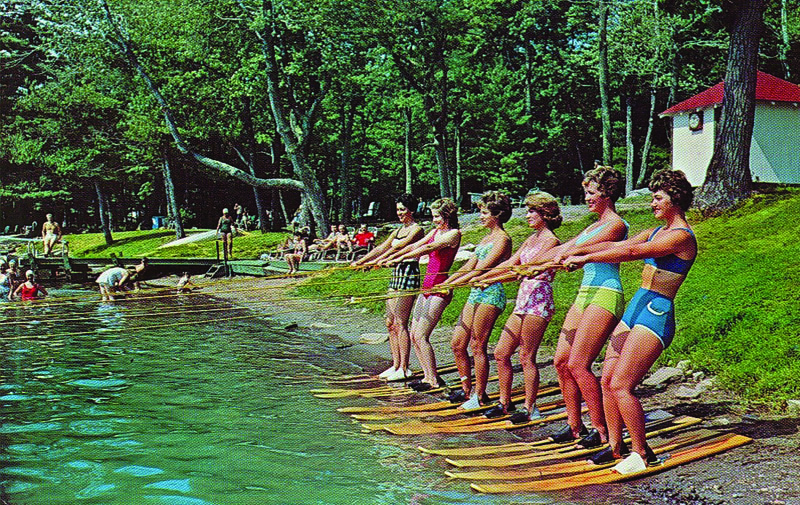
Lake Teedyuskung
As you’ve learned by now, Woodloch Resort is lucky enough to have a pretty incredible history, but it goes back further than that. In the early 17th century, the Lenni Lenape were the original indigenous people of the area now known as Lake Teedyuskung in the beautiful Pocono Mountains. An entire century later, and the Susquehanna Delaware people became the dominant tribe in the area. It was from them the name Lake Teedyuskung came.
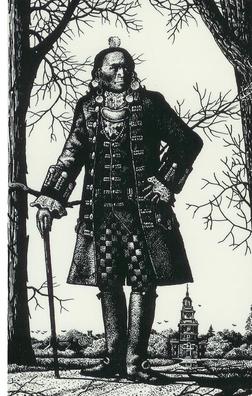 Chief Teedyuscung (1700-1763) was the strong-willed spokesman of the Susquehanna Delaware people. He and his people fought colonists for the land that he believed belonged to his tribe and he sought promise from the family of William Penn that the Wyoming Valley would be reserved for the displaced tribes of the area. Unfortunately, in 1762, Teedyuscung’s desperate battle for the land was lost and his requests for a home in the Wyoming Valley were denied.
Chief Teedyuscung (1700-1763) was the strong-willed spokesman of the Susquehanna Delaware people. He and his people fought colonists for the land that he believed belonged to his tribe and he sought promise from the family of William Penn that the Wyoming Valley would be reserved for the displaced tribes of the area. Unfortunately, in 1762, Teedyuscung’s desperate battle for the land was lost and his requests for a home in the Wyoming Valley were denied.
In 1763, Teedyuscung was murdered along with many other members of his tribe when arsonists set fire to approximately 20 cabins. Shortly after this incident, Teedyuscung’s son, Captain Bull, with a band of retaliating Delaware moved through Pennsylvania and New York killing about 50 settlers in revenge for his fathers death. Biographers speculate that the Susquehanna Company, which wanted the Wyoming Valley for Connecticut settlers, was behind the fire. In 1768, the disputed land was finally sold to the Pennsylvania government.
Fast forward to the late 1800s, James Henry and Adelaine Thompson, the grandparents of Helen Lockwood and James A. Thompson (Helen’s brother), purchased a large piece of land along the east shore of the lake from Martha J. Quick. The west shoreline was sold off as parcels during the Great Depression.
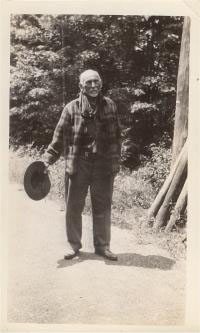
Famous Residents
It just so happens that Lake Teedyuskung was also home to a famous resident. That would be Daniel Carter Beard, one of the founders of the Boy Scouts of America (May 1905). An avid woodsman, illustrator and naturalist, Beard was a pioneering spirit of the Boy Scouts of America. In 1882, he illustrated Mark Twain’s ‘A Connecticut Yankee in King Arthur’s Court.’ Already 60 years old when the BSA was formed, Dan Beard became a founder when he merged his ‘The Sons of Daniel Boone’ organization with the naturalist Ernest Seton’s ‘Woodcraft Indians’ in 1910.
Dan owned 3 parcels on the lake. He acquired one piece from the George Rowland Estate in 1878. The second piece was owned by his brother, Harry Beard. The third piece of property was purchased by Mrs. Kellog in 1888 from James Henry Thompson and sold to Dan Beard for his school in 1926. It was remodeled into a tavern during the 1950s.
The Howard Hughes Connection
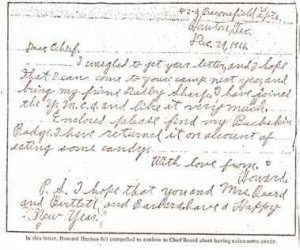 The lake has other noteworthy celebrity connections. Howard Hughes, best known for being a big budget filmmaker in the early to mid-1900s, was an admirer of Dan Beard. He visited the lake several times in the 1930’s. In this letter, Howard Hughes writes:
The lake has other noteworthy celebrity connections. Howard Hughes, best known for being a big budget filmmaker in the early to mid-1900s, was an admirer of Dan Beard. He visited the lake several times in the 1930’s. In this letter, Howard Hughes writes:
“I was glad to get your letter, and I hope that I can come to your camp next year and bring my friend Dudley Sharpes. I have joined the YMCA and like it very much. Enclosed please find my Buckskin Badge. I have returned it on account of eating some candy. With love from Howard. P.S. I hope that you and Mrs. Beard and Bartlett and Barbara have a Happy New Year”.
The Inn at Woodloch sits on the area that was once Camp Elektor, founded by Maude B. Clarke. A small summer camp on Lake Teedyuskung that remained in existence until 1970, Camp Elektor’s main purpose was to teach small children skills and service. Next to Camp Elektor, where Woodloch’s lake houses are now situated, was a small weight loss camp for young girls. The camp was not a success as campers could easily sneak over to Woodloch and purchase candy and ice cream. The North Lodge was formerly Camp Teedyuskung, a private girl’s camp, which specialized in horseback riding and horse care. Woodloch purchased the property in the early 1960’s to expand the existing boarding house, which would eventually become Woodloch Pines Resort.
What’s In a Name?
In the 1930s and even earlier, Lake Teedyuskung was called ‘Big Tink Pond.’ Lake Teedyuskung means ‘He Who Makes the Earth Tremble.’ ‘Little Tink’ was the pond at the end of the outlet, also called Simpson’s Pond.
Want to learn more?
Pick up a copy of ‘Lackawaxen Township Bicentennial Book’, copyright 1998. Stuart Communications, Inc., Narrowsburg, New York. It serves as an excellent source of information about Lackawaxen Township. Look for ‘Dan Beard’s Animal Book and Camp-Fire Stories,’ by M.A. Donahue, 1910.
